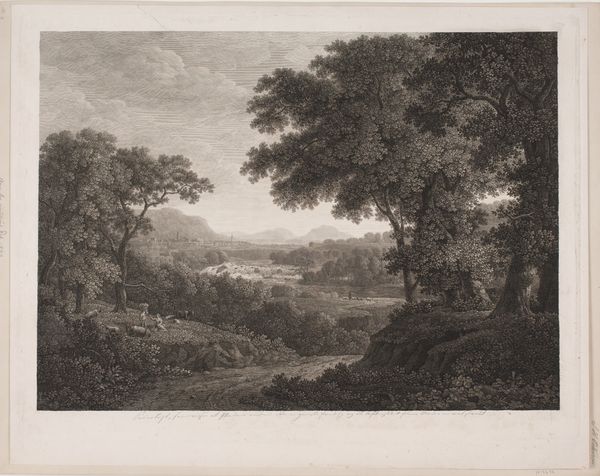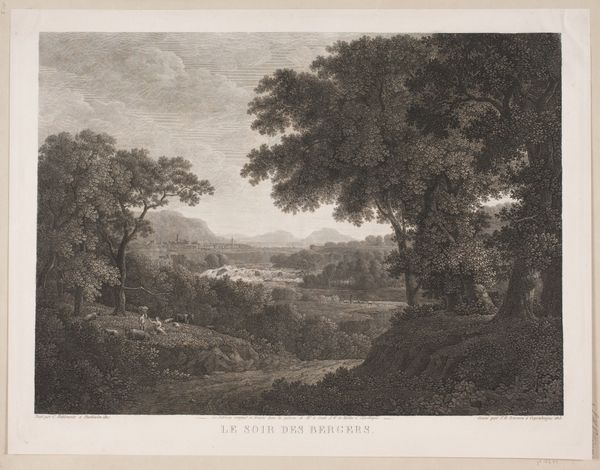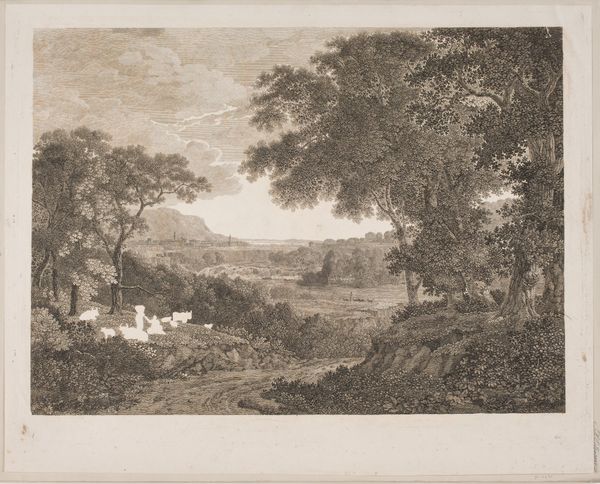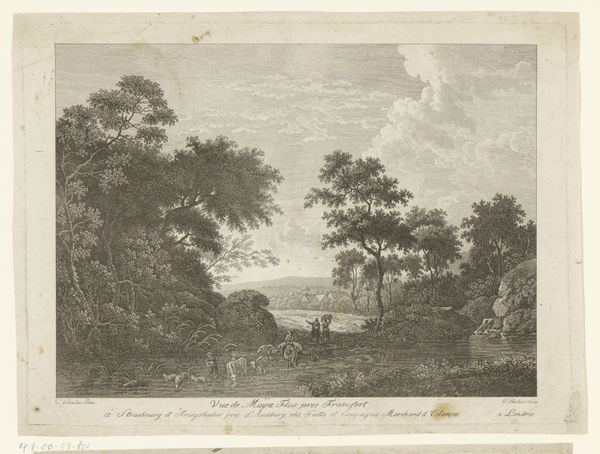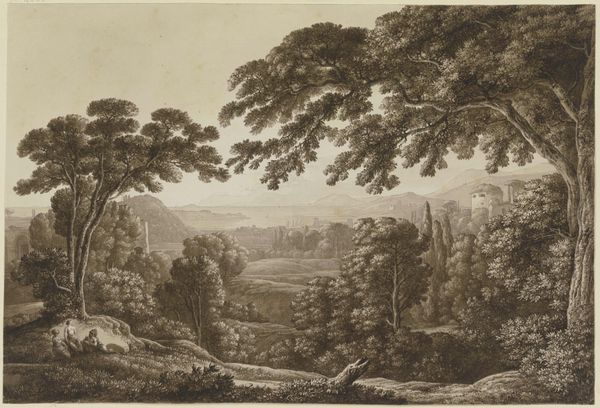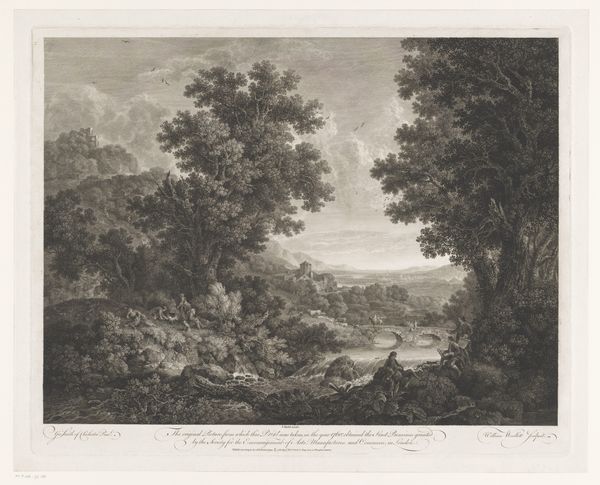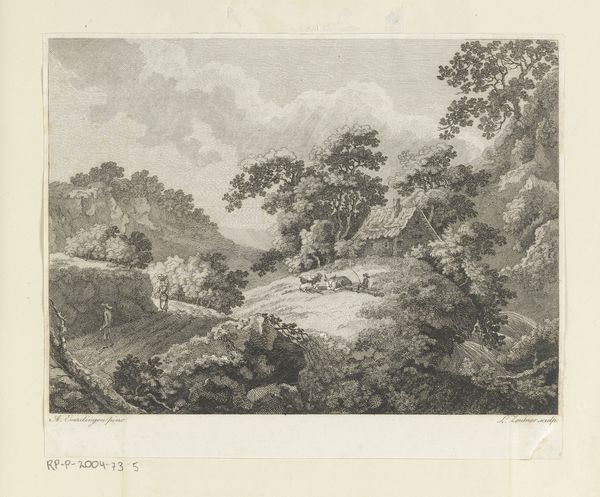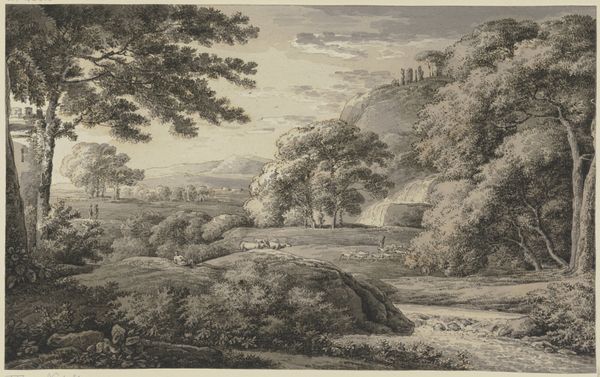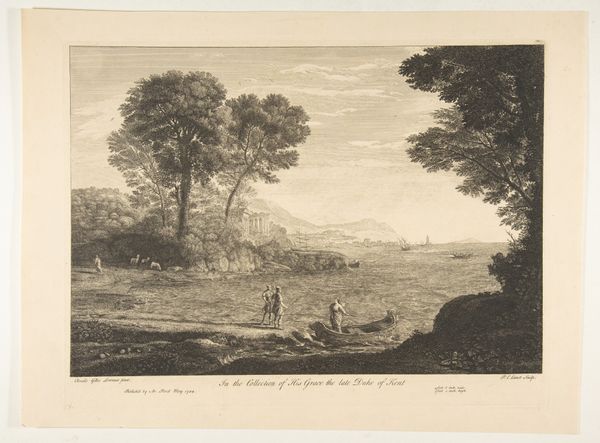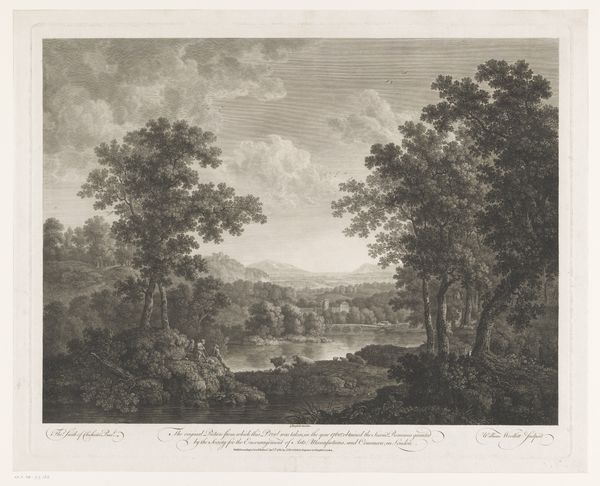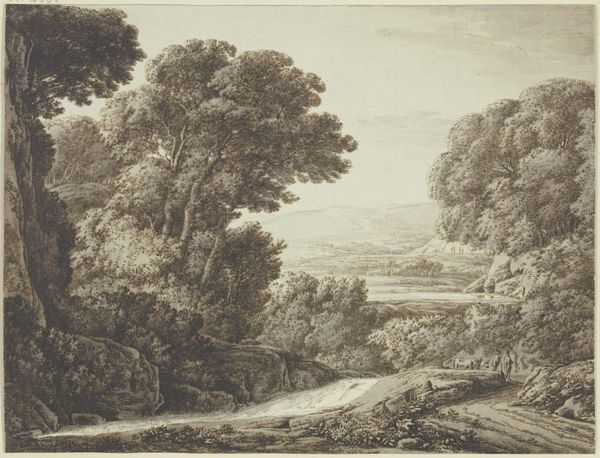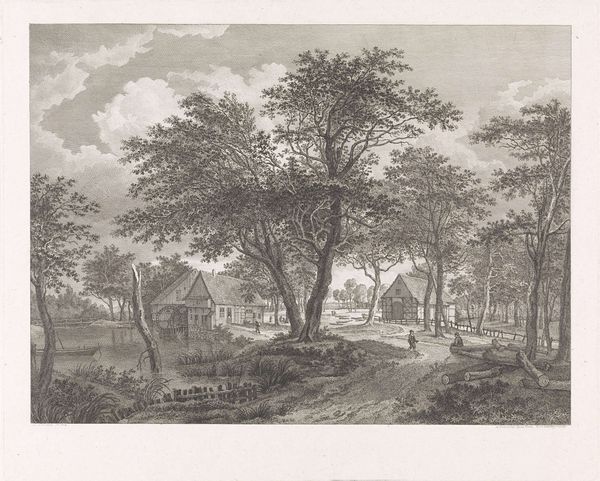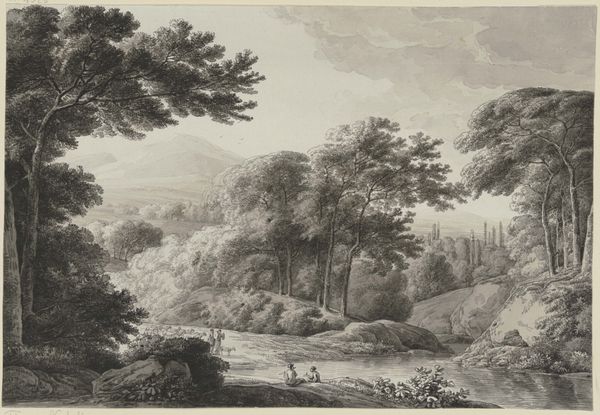
print, engraving
# print
#
landscape
#
romanticism
#
genre-painting
#
engraving
Dimensions: 462 mm (height) x 610 mm (width) (plademaal)
Curator: Standing here, we're observing "Le Soir des Bergers," or "The Shepherd's Evening," an engraving produced around 1828. It resides here at the SMK, the National Gallery of Denmark. Editor: The immediate impression is serenity. Despite being monochromatic, it’s intensely detailed. There’s a deep sense of perspective, a layering that invites the eye into a landscape pregnant with calm. Curator: That sense of perspective is central to Romantic landscapes. We see here a very strong composition employing established tropes of the period. There's the obvious interest in nature, but consider how such works served a burgeoning art market during a time of immense political upheaval in Europe. Editor: Yes, landscapes at this time weren’t neutral; they evoked identity and ownership of place during rapid urbanization. Who does this idealized scene really represent? It’s easy to see this work romanticizing pastoral life, perhaps at the expense of truly exploring the social realities that existed for agrarian communities. Curator: You raise an excellent point. Consider, though, that idealized images also shaped public discourse, sparking interest in and perhaps even concern for the rural poor within evolving political structures. These works were readily distributed via print, creating visual economies centered around concepts of nationhood and belonging. Editor: While dissemination broadens access, let's not dismiss the selective narratives reinforced here. The engraving technique, though skillful, also carries a level of distance and detachment, filtering direct emotional response, obscuring the hardships faced by the working classes that often worked under brutal feudal structures. The reality of their existence is glazed by beauty. Curator: I agree, that's crucial to remember. There’s definitely an interplay here between an attempt to create something artistically sublime and simultaneously conveying a socio-political message, intentional or not. Editor: Absolutely. This piece can show how aesthetics and politics were, and continue to be, closely entwined. It provokes us to consider whose stories get told and how these choices affect perception, not just in art history, but also contemporarily.
Comments
No comments
Be the first to comment and join the conversation on the ultimate creative platform.
